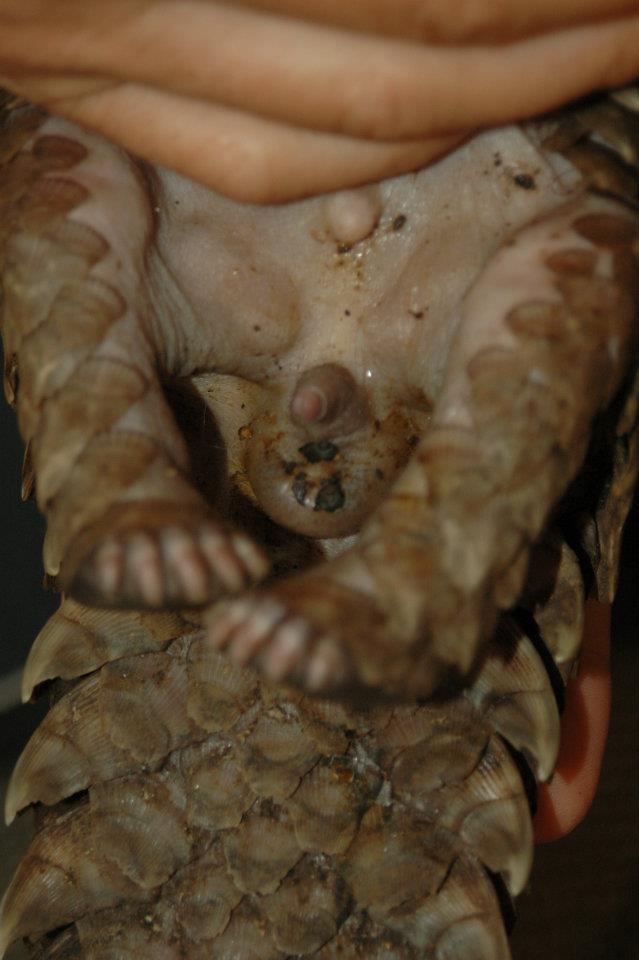Reproduction - Let's Get it On!
 Pangolins are dioecious
organisms, meaning male sex organs are found only on males and female sex
organs are only found on females. The significance of this is it takes both a male and a female
to reproduce. They also exhibit sexual dimorphism.
In other words, the two sexes have different phenotypes or appearances.
In the case of the pangolin, the male is much larger than the female
weighing up to 50% more. Pangolins reproduce sexually and exhibit a
typical mammalian life cycle, shown in the diagram to the right. To
check out an animation and get a more in depth explanation of the life cycle
of animals, click
here.
Pangolins are dioecious
organisms, meaning male sex organs are found only on males and female sex
organs are only found on females. The significance of this is it takes both a male and a female
to reproduce. They also exhibit sexual dimorphism.
In other words, the two sexes have different phenotypes or appearances.
In the case of the pangolin, the male is much larger than the female
weighing up to 50% more. Pangolins reproduce sexually and exhibit a
typical mammalian life cycle, shown in the diagram to the right. To
check out an animation and get a more in depth explanation of the life cycle
of animals, click
here.
As previously mentioned, these animals live on their own, only interacting with
other pangolins during mating. There is no specific mating season, but
most animals typically mate once a year during the summer and fall months.
To attract a mate, males will mark their location with urine or feces,
letting the females use their strong sense of smell to locate them. If
multiple males are in the same area as a female, they can fight over her,
using their strong tails as clubs.
 Once
fertilized and after a period of gestation of about 140 days, a
mother gives birth to a single baby. The young are very small, only
weighing around 12 ounces and are 6 inches in length. At first, they are
extremely vulnerable to predators because their scales are softer and white
in color. After a few days, the scales will slowly harden and become brown like an adult. To protect their young in this dangerous
stage, mothers nurse them in their burrows and curl into a ball around them
if they sense danger.
Once
fertilized and after a period of gestation of about 140 days, a
mother gives birth to a single baby. The young are very small, only
weighing around 12 ounces and are 6 inches in length. At first, they are
extremely vulnerable to predators because their scales are softer and white
in color. After a few days, the scales will slowly harden and become brown like an adult. To protect their young in this dangerous
stage, mothers nurse them in their burrows and curl into a ball around them
if they sense danger.
Once the babies are about a month old, they venture outside the burrow with their mother, riding on her back. During this time they continue to nurse but are also able to consume termites and ants. The mothers care for their young until they fully develop into adults at about 2 years of age and then abandon them. They animals are also sexually mature at that age and are able to reproduce, continuing the cycle of life.
Click here to discover the many interactions and relationships the pangolin has with other organisms!
Back to Homepage
